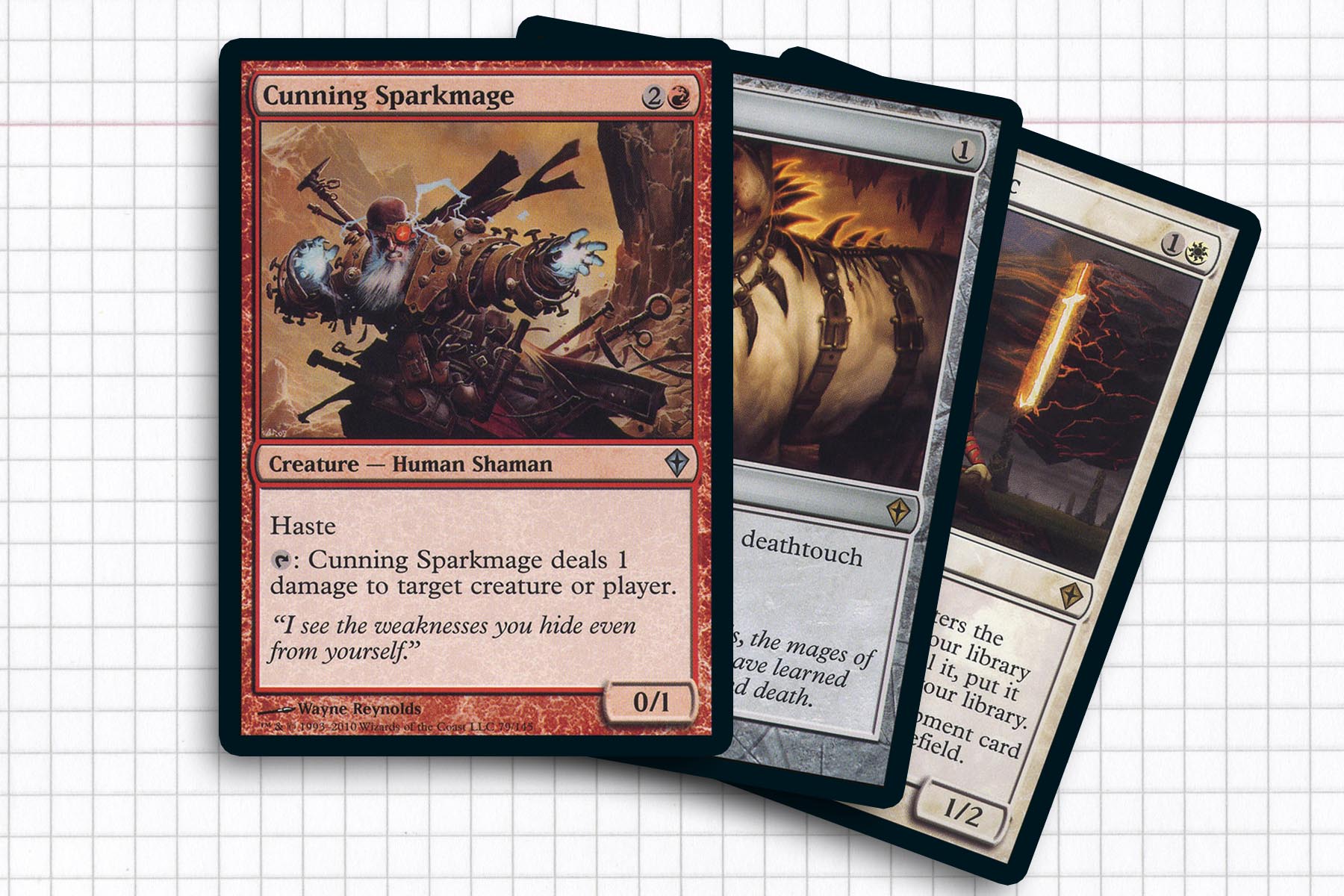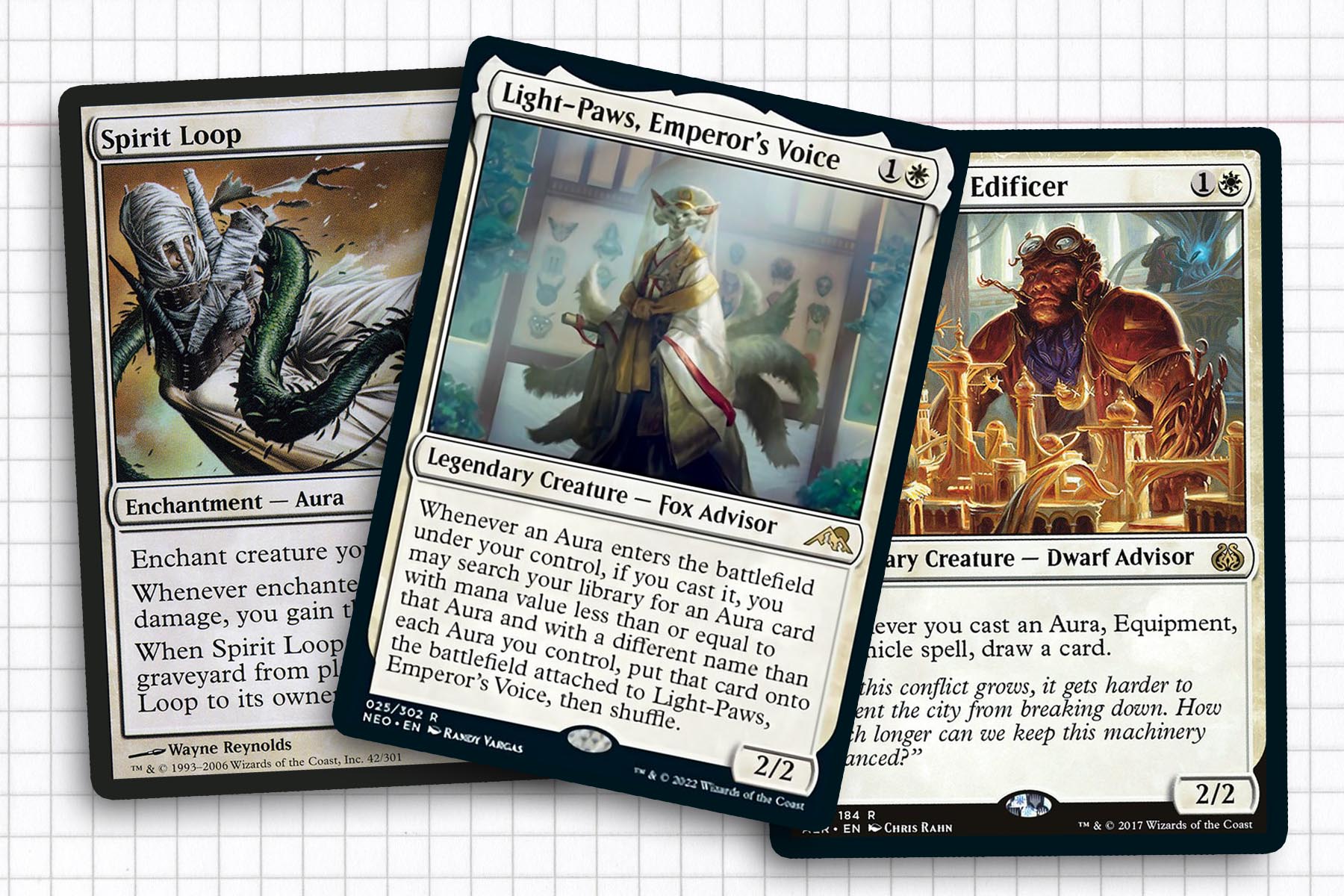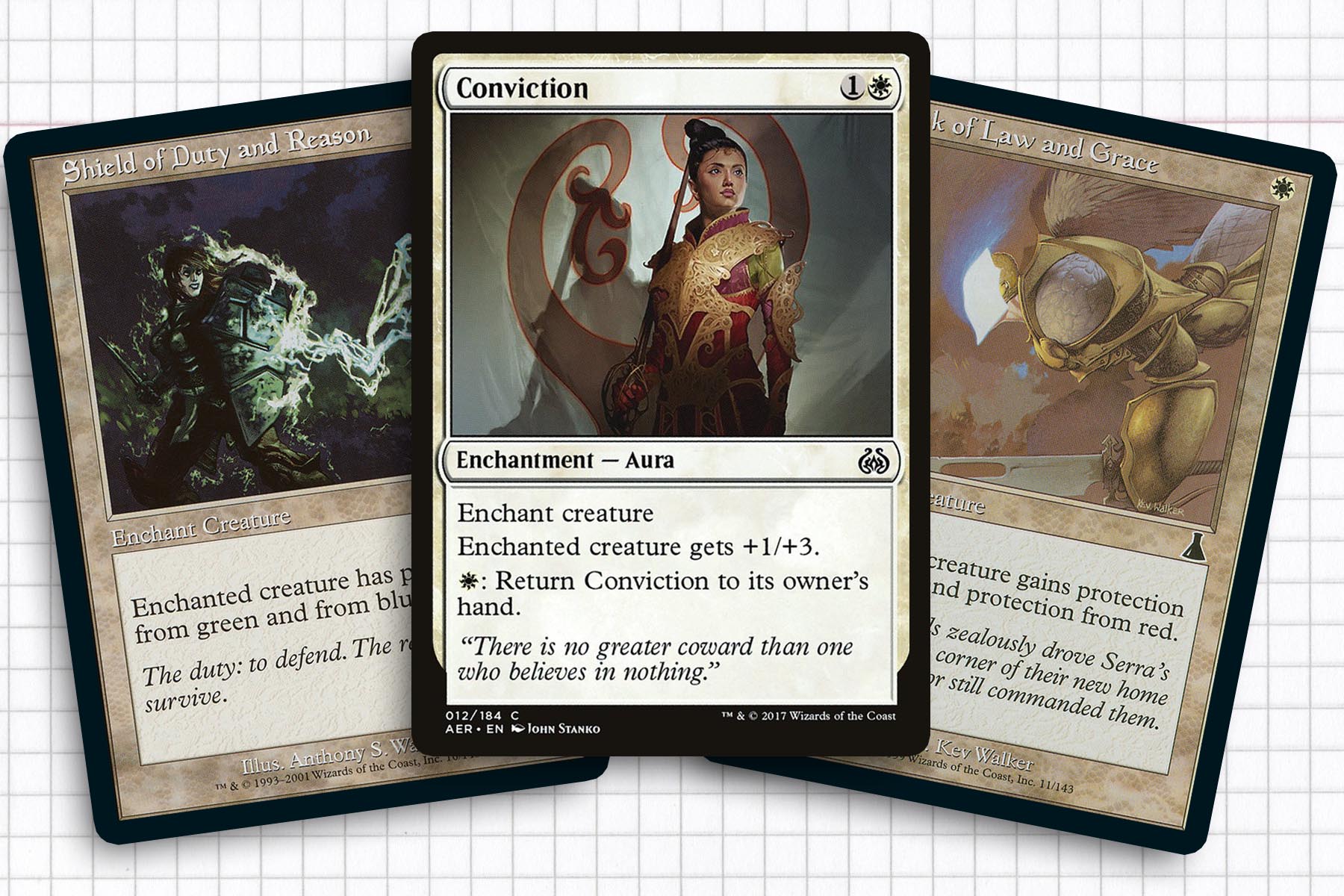Writing this column over the last five years has come naturally. I really love Commander, and building decks has always been one of my favorite hobbies throughout my entire tenure with Magic. But honestly, sometimes generals come along that appeal to me, but I don’t have the brain power to try to figure out what I actually want to do with them. Sometimes Wizards does me a favor and supplies an entire Commander product that I can buy, with 60% of the deck built and cues towards what can be removed for proper optimizing.
As you can probably already tell, this week is not going to be one of those weeks where I build the deck from scratch or take cues from a preconstructed deck that Wizards has created for us. Instead I will be diving into the controversial world of netdecking. I have a murky history with the practice. I get a lot of joy out of building my own decks and I don’t participate in netdecking very often. But it is a practice that the community has an irrational disdain for—and quite honestly, I don’t entirely understand what all of the anger is really being aimed at.
This week, we are going to be looking at Light-Paws, Emperor’s Voice, a cool looking mono-colored general that I now know I was coming at from the wrong direction. Mono-colored decks do not always come easy for me and I often drift towards the minimum of two colors, just so I feel like I can play a deck that doesn’t need to dive into kinds of expensive staples that are required when you need to make up for a color’s entire swath of shortcomings. I’d like to think I learned some stuff while consulting the hive mind this week, and I’m excited to share the discoveries. But first, let’s get some context for netdecking.

The Case for Netdecking
Netdecking—the act of copying an often tournament winning deck from the internet and playing it unmodified or only with slight changes—is a concept that I was not aware of for almost the first decade I was playing Magic. Partially because I was not with it enough to be aware of websites outside of DailyMTG and partially because engaging in the Constructed hive mind wouldn’t have meant anything to me at the time. But just before Zendikar Standard, I became aware of the discussions into the legitimacy and effect of the internet on how quickly formats were being solved at the time. It was eye opening.
The concept of netdecking always existed during my time with Commander, but it wasn’t until the advent of EDHrec that it became a hot topic. It didn’t really effect me, as my pride came from building decks that are uniquely my own. But I would be lying if I said that I have never started with the average build, just to get something off the ground. Not to mention how valuable it can be for finding cards that fill the final pieces of the mana curve that you just haven’t considered. To me, finding disdain with netdecked builds is like looking down on someone playing a precon out of the box: it’s not my style most of the time and it’s certainly none of my business if someone chooses to do it.
There’s a lot of value that can be had by starting with a decklist that is functional. It’s a good method to just get the deck built and start putting it through its paces. The number of decks that I’ve wasted time on because I wanted to sit down for two weeks and craft my own individual list instead of putting together the lowest common denominator version of the deck. Y’all, I could have saved so much time, because I would have quickly realized they weren’t the decks for me. Not to mention, the popular cards for a niche general are popular for a reason.
This ultimately brings me to this week’s topic: Light-Paws, Emperor’s Voice. Looking at Light-Paws, I had a lot of preconceived notions, which we will get into, about how I would have built this deck. But once I looked at the average build and observed the general consensus, I realized that the way that I was conceptualizing the deck in my head actually didn’t make a whole lot of sense. Which is why they provide a good example of why netdecking is not the worst thing in the world.
Commander: Light-Paws, Emperor’s Voice
Creatures: Ajani’s Chosen, Archon of Sun’s Grace, Danitha Capashen, Paragon, Eidolon of Countless Battles, Esper Sentinel, Heliod’s Pilgrim, Hero of Iroas, Katilda, Dawnhart Martyr, Knight of the White Orchid, Kor Spiritdancer, Mesa Enchantress, Sram, Senior Edificer, Starfield Mystic, Transcendent Envoy, Umbra Mystic
Artifacts: Arcane Signet, Archaeomancer’s Map, Helm of the Gods, Mind Stone, Pearl Medallion, Sol Ring, Swiftfoot Boots
Enchantments: All That Glitters, Angelic Destiny, Angelic Gift, Battle Mastery, Benevolent Blessing, Conviction, Darksteel Mutation, Daybreak Coronet, Ethereal Armor, Faith Unbroken, Faith’s Fetters, Felidar Umbra, Flickerform, Flickering Ward, Gift of Immortality, Hyena Umbra, Light of Promise, Mantle of the Ancients, Mask of Law and Grace, Minimus Containment, On Serra’s Wings, Pariah, Reprobation, Sage’s Reverie, Sentinel’s Eyes, Shield of Duty and Reason, Shielded by Faith, Sigarda’s Aid, Sigil of the Empty Throne, Spectra Ward, Spirit Loop, Timely Ward, Unquestioned Authority
Instants: Generous Gift, Karametra’s Blessing, Path to Exile, Rebuff the Wicked, Swords to Plowshares
Sorceries: Brilliant Restoration, Divine Reckoning, Idyllic Tutor, Open the Armory, Retether, Three Dreams, Winds of Rath
Lands: 24 Plains, Drifting Meadow, Eiganjo, Seat of the Empire, Hall of Heliod’s Generosity, Mikokoro, Center of the Sea, Nykthos, Shrine to Nyx, Rogue’s Passage, Secluded Steppe, War Room

Going Big Maybe Bad
This decklist is almost verbatim the average list currently pulled from EDHrec, plus or minus a few cards simply because I wanted to find space for Faith’s Fetters. I valued Spirit Loop over Spirit Mantle, and I like Mikokoro, Center of the Sea in mono-colored decks. My biggest takeaway when looking at this list for the first time was noticing how many one and two mana value auras resided in the deck. This was contrary to my original thinking, and I soon realized that I was very wrong for thinking that I was going to be playing an excessive amount of 4+ mana value auras. By myself, I think it could have taken hours of my life and several drafts to properly contextualize.
Light-Paws, Emperor’s Voice jumped out of me almost immediately during preview season, reminding me of the gameplay of Wild Pair enough to tip me off to the potential on hand. Being able to cast an aura and tutor for one of equal or lesser mana value is likely very powerful, but as the hive mind had already figured out, the true power lies in the the auras low on the curve which synergize with Light-Paws’ trigger and can grant the bread-and-butter effects we’re looking for in the moment. Like an inverse of how cascade decks are built, but with the same philosophy of consistency.
This philosophy also makes sense in the context of Kor Spiritdancer and Sram, Senior Edificer, two of our best draw engines. If we want to propel ourselves through our deck, it makes sense that we want to invest the minimal amount of mana into our auras to synergize with these cards and the package of enchantress cards also on hand. From there, we can hope to dig into Danitha Capashen, Paragon, Starfield Mystic, Transcendent Envoy, or Pearl Medallion, just to bring the whole thing to top speed. While this might be a little more efficient than I care for, with my biggest personal gripe being that it’s a game plan with little intention of interacting with the rest of the players outside of “attack you,” it’s the kind of issue that can always be downplayed with some customization.

Clever Tricks
While a netdeck is most famously going to help to propel a deck towards efficiency, the hive mind also deserves credit for how quickly it can iterate and create innovations that are also clever. It’s easy to overlook, but Light-Paws forces our hand to build towards a Voltron strategy by having the tutored auras attach directly to them. This is what makes Divine Reckoning and Winds of Rath the perfect board wipes for this deck. Both of these spells are commonly on my radar, but may have slipped past me, if I got too invested in my biases about the removal appropriate for aura-based decks. This is also where Karametra’s Blessing can shine, this instant has hardly ever been on my mind, because its most valuable use is so rarely relevant in most of the decks I’ve built in the last two year and as such, has become a hidden gem.
Another useful suite of cards were the ones that easily returned to our hand, like Conviction and Flickering Ward. As a part-time enchantress aficionado, I had certainly done my paces with Cage of Hands in the past, but rarely did I consider enchantments that I would want to be placing on to my own creatures. In a deck where we want to grab toolbox auras on the regular, these two seemed like a great way to ensure that we had access to cards like Mask of Law and Grace and Shield of Duty and Reason, the “Swords of X and Y” of the deck. I love these two protection auras, also hidden gems, especially for being on theme within this deck.
The last, more subtle, piece of this deck is that it can very easily become a go-wide strategy. This coincidentally, was another misconception as I saw this deck as strictly Voltron at first read. While we can cast some of these auras on to some of the creatures that are lying around and tutor up an additional Aura for our general, we can also pretty easily get along without her. Cards like Archon of Sun’s Grace and Sigil of the Empty Throne can take the mana reduction spells we’ve already talked about and leverage them to help us go wide at a moment’s notice. This kind of transformative suite built into a deck can be very helpful if one or two players commit a lot of energy to prevent our main gameplay from really coming together.
Closing Thoughts
Overall, I don’t have much of a problem with net decking. Mostly because it creates a gulf between new and entrenched players. It takes some of the originality that really attracted me to Commander out of the equation, but this also does speak to the psychographic that each player falls into. I am just not somebody who necessarily needs to play the best, most optimized deck.
All that said, it is a pretty harmless part of the format that allows for decks to get up to speed enough to be playable and allow for their owners to figure out what they do and do not like about a deck. It’s the same thing that makes preconstructed decks such a great product and at this point it is just a part of the culture of Magic. Once you become entrenched enough in the game and you become aware of the tools that are available to you, it is foolish to not at least consider those tools when you are trying to assemble a deck.
I feel like in the last five years content revolving around deck techs have rapidly disappeared. Channels like CMDR decks and Top and Go were great ways to show off an individual deck while also allowing the deck builder to really take pride in what they had assembled. In many ways I know that this trend died simply because Commander content grew beyond it, but I also think that it fell prey to the stigma that was hurting net decking’s reputation in the mid to late 2010s. The question I think most Commander players need to ask themselves is: How does net decking make you feel? If they have a problem with it, why?
Thanks for reading.
Ryan Sainio is a Graphic Designer who writes about EDH and the EDH community. He has been playing Magic: the Gathering since 7th Edition in 2002 and values flavorful and fun gameplay over competitively optimized decks.

